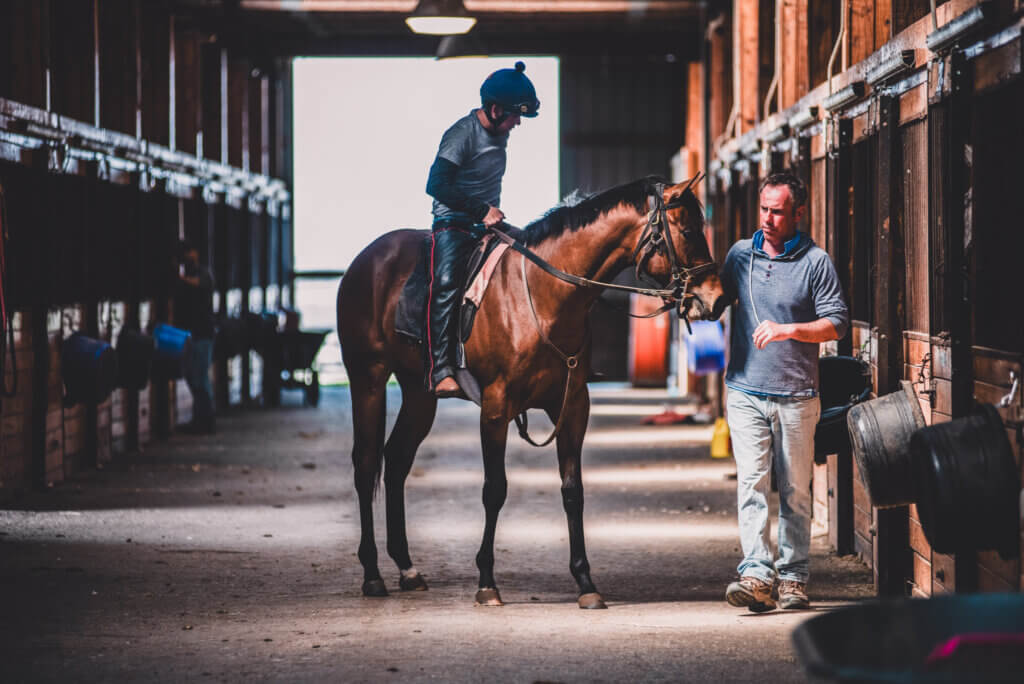Letter to the editor: racing surfaces & testing: Dr Mick Peterson & Dr Wayne McIlwraith, Thoroughbred Daily News, 2024. Read full article.
This year marks 15 years since the Racing Surfaces Testing Lab (RSTL) was founded by an engineering faculty member at the University of Maine and an orthopedic surgeon from Colorado State University. The non-commercial material testing lab emerged out of the 2006 Grayson-Jockey Club Welfare and Safety of the Racehorse Summit at the urging of Dennis Moore of Hollywood Park and Dan Fick of The Jockey Club. Initially located in one stall of a two-car detached garage in Orono, Maine, the independent non-profit was made possible by donations from The Jockey Club, National Thoroughbred Racing Association, Churchill Downs Inc., The New York Racing Association, California Association of Racing Fairs and Oak Tree Foundation.
The RSTL in 2023 has little in common with that modest start. Now located in Lexington, Kentucky, the RSTL is in a 3,400-square-foot building on a 1/4-acre lot. The fenced lot is filled with vans and trailers that performed more than 70 pre-meet inspections at 53 racetracks in 2023. The lab no longer just performs standard tests but develops tests in collaboration with the University of Kentucky and racetrack operators, researchers, and graduate students from Europe, Latin America, and Australia. Fifteen years ago, surface standards for horse racing in the United States lagged behind other racing jurisdictions and sports. Today, thanks to a combination of federal legislation and a unique gift, horse racing in the United States has the potential to become an international model for safety and consistency across sport surfaces.
The beginning of the shift started with a 2019 gift from The Jockey Club which enabled the RSTL to take over existing on-site testing and the maintenance database. The single set of equipment previously available for pre-meet inspection had been based in Maine and later in Lexington to serve all racetracks in the United States. The gift provided funding for equipment to be located in Lexington as well as on the West Coast.
With this equipment, the RSTL could perform pre-meet testing at racetracks across the United States and respond quickly if concerns arose. Laboratory material testing was modernized with new equipment, which allowed critical testing to be performed in less than an hour instead of over several days. The existing database was replaced by a new system hosted by The Jockey Club, which started the RSTL on a path to more comprehensive data storage and provided a modern interface for the racetracks to enter maintenance data. The timing could not have been more auspicious. Demand was poised to far outstrip the testing capabilities that existed prior to receiving the gift from The Jockey Club.
When the HISA Safety Regulations went into effect in July 2022, pre-meet inspection, material testing and daily measurements were required at all covered racetracks. As a result of these regulations, the Maintenance Quality System protocols developed over the previous decade had become more than suggestions followed by a few of the most progressive racetracks. Using the new equipment, pre-meet inspections were immediately implemented by the RSTL for HISA. Today, after only one and a half years, test data is available from all covered racetracks. Updated information infrastructure from The Jockey Club forms the backbone of a system that feeds data to HISA in real time. Epidemiological models of horse injuries can now begin to include quantitative racetrack surface data.
Work remains. Dirt, turf and synthetic racetrack surfaces need continuous improvement. Complete daily monitoring of the tracks exists at only a few racetracks. Real-time race surface data is needed by superintendents and researchers. However, the data infrastructure and regulatory framework is in place. New information can be fed to racetrack maintenance personnel. The commitment of the RSTL is unchanged. The design of equipment and testing protocols are all publicly available and subject to peer review. Data from the tracks is widely shared among other racetracks. No other racing jurisdiction and very few other sports have combined research with transparency to build surfaces that are consistent, from day to day, and throughout the United States and Canada.
Michael “Mick” Peterson, Ph.D. is the Director of the Racetrack Safety Program and Professor of Biosystems and Agricultural Engineering at the University of Kentucky. He is also the Executive Director and a co-founder of the Racing Surfaces Testing Laboratory. Wayne McIlwraith is the founding director of the Orthopaedic Research Center, a University Distinguished Professor in orthopaedics and holds the Barbara Cox Anthony University Chair in Orthopaedic Research at Colorado State University.



